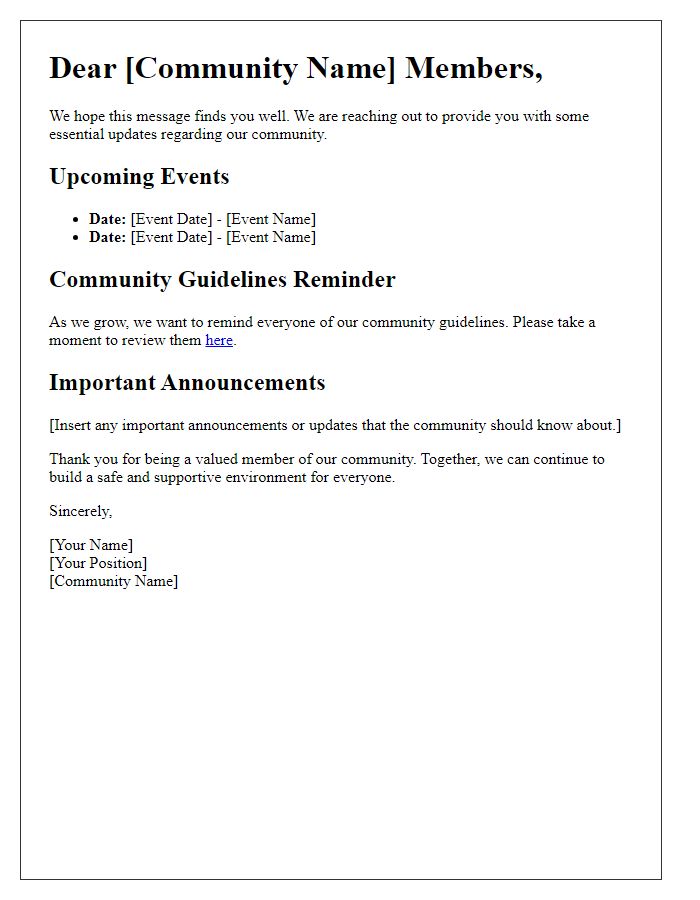In today's fast-paced world, effective communication during a crisis is more crucial than ever for maintaining trust and understanding within our community. Crafting a clear and concise letter template can help address urgent issues while reassuring members that we are actively managing the situation. It's important to convey empathy and transparency to foster a sense of unity among us during challenging times. For essential tips and strategies on how to create your own urgency communication letters, keep reading!

Subject Line with Urgency
An urgent crisis communication requires a direct approach to ensure all members are informed about the situation. The subject line should clearly convey the need for immediate attention. For instance, "ACTION REQUIRED: Immediate Response Needed Regarding [Crisis Event or Situation]." This direct subject line emphasizes the urgency, prompting members to open and address the content promptly. Each member should be made aware of specific steps needed to mitigate the crisis, including deadlines, resources available, and support contacts. The tone should balance professionalism with the gravity of the situation, ensuring clarity while motivating swift action.
Clear and Immediate Action Required
Urgent crisis communication requires immediate and effective messaging to all members. An emergency situation, such as a data breach affecting personal information, necessitates an alert sent through multiple channels, including email, SMS, and app notifications. The communication should emphasize the urgency of the issue while providing clear instructions: members need to update their passwords immediately, monitor their financial statements, and report any suspicious activity to the designated support team. A dedicated hotline number (such as 1-800-123-4567) should be available for members who need further assistance or wish to discuss concerns about the situation. The communication must encourage members to act promptly to protect their information and the integrity of the organization.
Contact Information for Follow-Up
In times of urgent crisis communication, having accurate contact information for follow-up is essential for facilitating effective responses. Members should be provided with a centralized communication resource, such as a dedicated hotline number (e.g., 1-800-555-0199) for immediate inquiries, and an email address (e.g., support@example.org) for detailed questions. Additionally, incorporating region-specific contacts allows localized assistance, ensuring better tailored support. Emergency management teams should also maintain real-time updates via their official website (www.example.org/crisis) to disseminate vital information efficiently. Regularly updated social media channels, such as Twitter (@ExampleCrisis), can further enhance communication outreach and keep members informed.
Reassurance and Support Offer
In times of urgent crisis, effective communication is vital to reassure members and offer necessary support. A crisis, such as a natural disaster (like Hurricane Ian in Florida, 2022), can lead to widespread uncertainty and distress among communities. Providing clear information about available resources, such as mental health services (including hotlines and counseling programs) and financial assistance (grants available for affected families), is crucial. Addressing specific concerns, such as health updates (CDC recommendations) and recovery efforts (local charities and government programs), reinforces a sense of unity. Acknowledging the emotional toll (increased anxiety and stress levels) while emphasizing that support will be continuously available fosters trust and solidarity among members during challenging times.
Timely Response Request
In urgent crisis situations, effective communication is critical for maintaining trust and clarity among members. Rapid dissemination of information, particularly in the face of unexpected events or challenges, ensures that individuals remain informed. Key details such as the nature of the crisis (e.g., natural disaster, security threat), the affected areas (specific locations or communities), and any immediate actions required from members (such as evacuation or safety protocols) must be communicated swiftly. Additionally, contact points for further information, such as dedicated hotlines or email addresses, should be clearly outlined to provide ongoing support. Timeliness in communication not only mitigates confusion but also fosters a sense of community and collective action during emergencies.













Comments